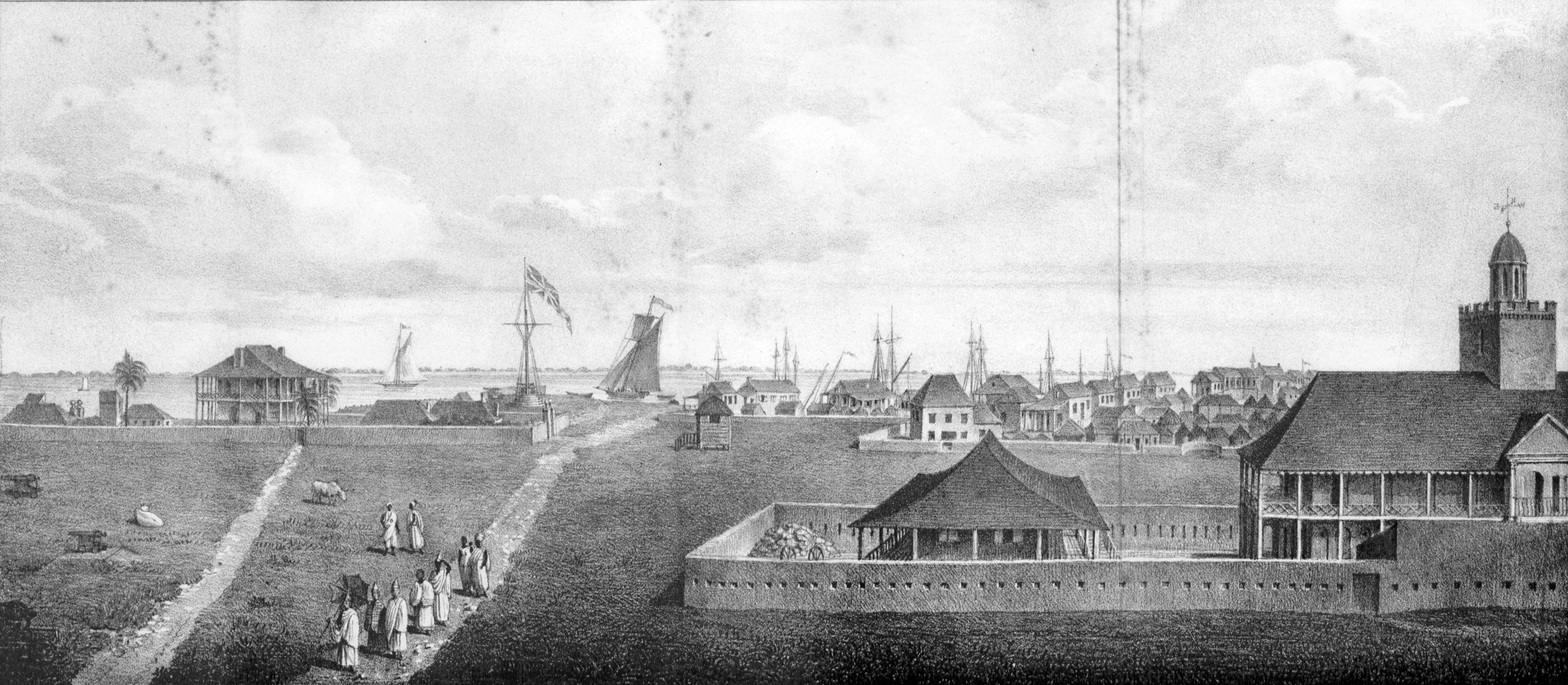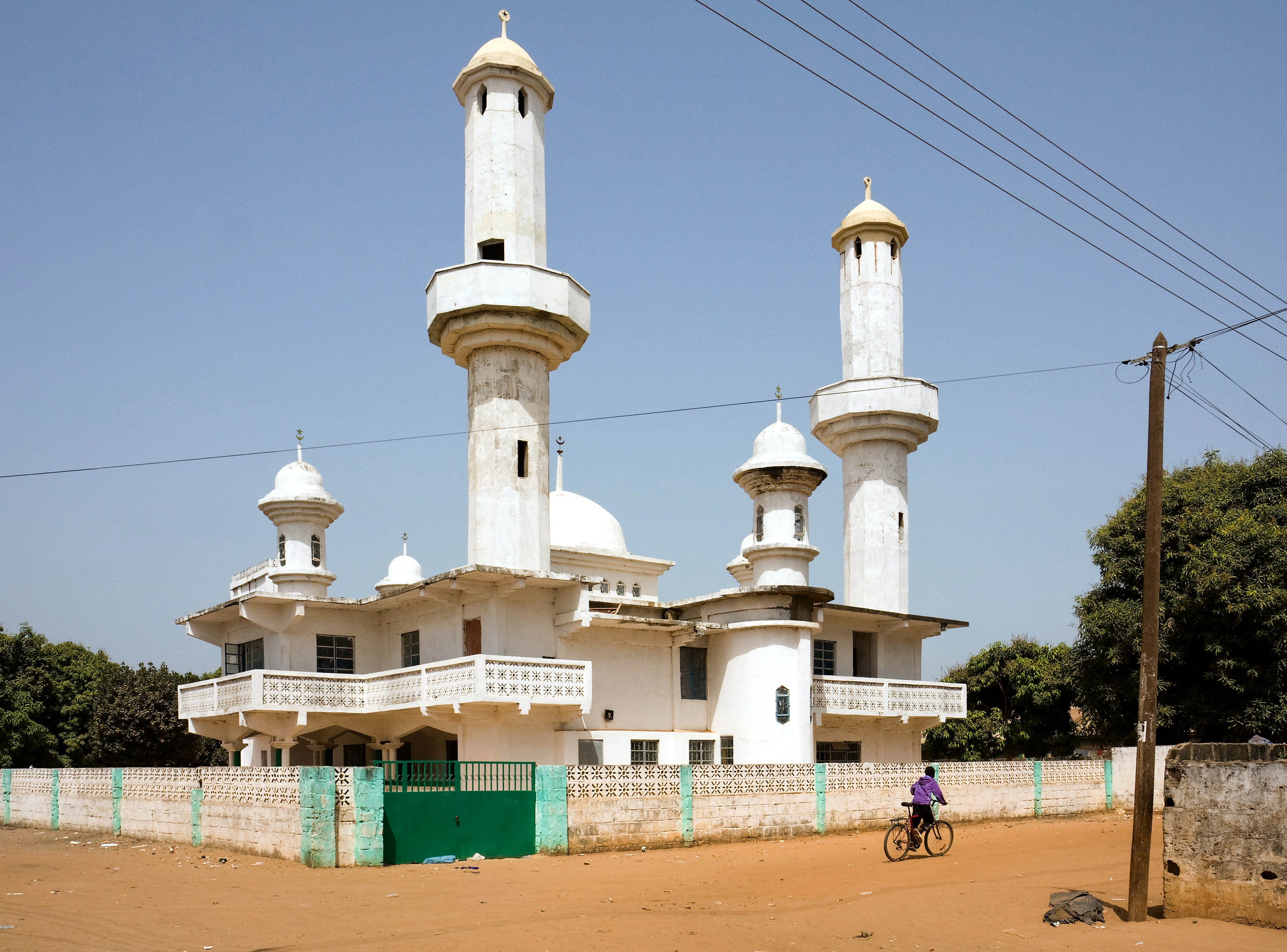|
Bakau Kachikally
The Kachikally crocodile pool is located in the heart of Bakau, Gambia, about 10 miles (16km) from the capital Banjul. It is one of three sacred crocodile pools used as sites for fertility rituals. The others are Folonko in Kombo South and Berending on the north bank. Ownership Kachikally is a privately owned crocodile pool belonging to the Bojang family of Bakau, one of the founding families and major land owners of the city. Kachikally is also the name of the central district of Bakau town; other districts are Sanchaba and New Town, Mile 7, Farrokono. Crocodiles The exact number of crocodiles is not known but it is estimated that there are about 80. It was long claimed that all the animals are Nile crocodiles (''Crocodylus niloticus''), but research suggests they are a different species, namely the West African crocodile The West African crocodile, desert crocodile, or sacred crocodile (''Crocodylus suchus'') is a species of crocodile related to – and often confuse ... [...More Info...] [...Related Items...] OR: [Wikipedia] [Google] [Baidu] |
Bakau
Bakau is a town on the Atlantic coast of Gambia, west of Gambia's capital city of Banjul. It is known for its botanical gardens, its crocodile pool ''Bakau Kachikally'' and for the beaches at Cape Point. Bakau is the first major suburb outside Banjul and the most developed town in the Gambia. Close to Bakau and Banjul is Gambia's largest city, Serekunda. History Legend has it that Bakau grew up around the holy crocodile pool in Kachikally, the central district of Bakau. Bakau itself was a small village at the turn of the 19th century and grew in importance as it became a favourite place for private residences of colonial administrators, especially along the beautiful palm fringed beaches. Despite being a major town, the old village still exists and is run like any other in the Gambia, with an 'Alkali' (similar to 'Mayor') and divided into ''Kabilos''. There exists a much smaller village within the old village called Bakau Wasulung Kunda, indicating the migrant origins of its i ... [...More Info...] [...Related Items...] OR: [Wikipedia] [Google] [Baidu] |
Gambia
The Gambia,, ff, Gammbi, ar, غامبيا officially the Republic of The Gambia, is a country in West Africa. It is the smallest country within mainland AfricaHoare, Ben. (2002) ''The Kingfisher A-Z Encyclopedia'', Kingfisher Publications. p. 11. . and is surrounded by Senegal, except for its western coast on the Atlantic Ocean. The Gambia is situated on both sides of the lower reaches of the Gambia River, the nation's namesake, which flows through the centre of the Gambia and empties into the Atlantic Ocean, thus the long shape of the country. It has an area of with a population of 1,857,181 as of the April 2013 census. Banjul is the Gambian capital and the country's largest metropolitan area, while the largest cities are Serekunda and Brikama. The Portuguese in 1455 entered the Gambian region, the first Europeans to do so, but never established important trade there. In 1765, the Gambia was made a part of the British Empire by establishment of the Gambia. In 1965, t ... [...More Info...] [...Related Items...] OR: [Wikipedia] [Google] [Baidu] |
Banjul
Banjul (,"Banjul" (US) and ), officially the City of Banjul, is the capital and fourth largest city of . It is the centre of the eponymous administrative division which is home to an estimated 400,000 residents, making it The Gambia's largest and most densely populated metropolitan area. Banjul is on St Mary's Island (Banjul Island), where the enters the < ... [...More Info...] [...Related Items...] OR: [Wikipedia] [Google] [Baidu] |
Crocodile
Crocodiles (family (biology), family Crocodylidae) or true crocodiles are large semiaquatic reptiles that live throughout the tropics in Africa, Asia, the Americas and Australia. The term crocodile is sometimes used even more loosely to include all extant taxon, extant members of the order (biology), order Crocodilia, which includes the alligators and caimans (family Alligatoridae), the gharial and false gharial (family Gavialidae) among other extinct taxa. Although they appear similar, crocodiles, alligators and the gharial belong to separate biological family (biology), families. The gharial, with its narrow snout, is easier to distinguish, while Morphology (biology), morphological differences are more difficult to spot in crocodiles and alligators. The most obvious external differences are visible in the head, with crocodiles having narrower and longer heads, with a more V-shaped than a U-shaped snout compared to alligators and caimans. Another obvious trait is that the upp ... [...More Info...] [...Related Items...] OR: [Wikipedia] [Google] [Baidu] |
At The Crocodile P Galleryfull
AT or at may refer to: Geography Austria * Austria (ISO 2-letter country code) * .at, Internet country code top-level domain United States * Atchison County, Kansas (county code) * The Appalachian Trail (A.T.), a 2,180+ mile long mountainous trail in the Eastern United States Elsewhere * Anguilla (World Meteorological Organization country code) * Ashmore and Cartier Islands (FIPS 10-4 territory code, and obsolete NATO country code) * At, Bihar, village in Aurangabad district of Bihar, India * Province of Asti, Italy (ISO 3166-2:IT code) Science and technology Computing * @ (or "at sign"), the punctuation symbol now typically used in e-mail addresses and tweets) * at (command), used to schedule tasks or other commands to be performed or run at a certain time * IBM Personal Computer/AT ** AT (form factor) for motherboards and computer cases ** AT connector, a five-pin DIN connector for a keyboard * The Hayes command set for computer modems (each command begins with the ... [...More Info...] [...Related Items...] OR: [Wikipedia] [Google] [Baidu] |
Nile Crocodile
The Nile crocodile (''Crocodylus niloticus'') is a large crocodilian native to freshwater habitats in Africa, where it is present in 26 countries. It is widely distributed throughout sub-Saharan Africa, occurring mostly in the central, eastern, and southern regions of the continent, and lives in different types of aquatic environments such as lakes, rivers, swamps, and marshlands. In West Africa, it occurs along with two other crocodilians. Although capable of living in saline environments, this species is rarely found in saltwater, but occasionally inhabits deltas and brackish lakes. The range of this species once stretched northward throughout the Nile, as far north as the Nile Delta. On average, the adult male Nile crocodile is between in length and weighs including stomach stones. However, specimens exceeding in length and weighing up to have been recorded. It is the largest freshwater predator in Africa, and may be considered the second-largest extant reptile in the w ... [...More Info...] [...Related Items...] OR: [Wikipedia] [Google] [Baidu] |
West African Crocodile
The West African crocodile, desert crocodile, or sacred crocodile (''Crocodylus suchus'') is a species of crocodile related to – and often confused with – the larger and more aggressive Nile crocodile (''C. niloticus''). Taxonomy Compared to the Nile crocodile, the West African crocodile is smaller: Adults are typically long, and maximum is perhaps . The species was named by Étienne Geoffroy Saint-Hilaire in 1807, who discovered differences between the skulls of a mummified crocodile and those of Nile crocodile (''C. niloticus''). This new species was, however, for a long time afterwards regarded as a Synonym (taxonomy), synonym of the Nile crocodile. In 2003, a study indicated that ''C. suchus'' was a valid species, and this was confirmed by several other studies in 2011–2015. Despite the long history of confusion, Genetics, genetic testing has revealed that the two are not particularly close. The closest relatives of the Nile crocodile are the ''Crocodylus'' species fr ... [...More Info...] [...Related Items...] OR: [Wikipedia] [Google] [Baidu] |
Religion In The Gambia
The Gambia is a Muslim majority country, with Muslims constituting 96.4% of the population, some 3.5% are Christian, and 0.1% practice other religions (including African Traditional Religions). Legal regulations Articles 17, 25, 32, 33, and 212 of the Constitution guarantee and protects the freedom of religion. Article 60 of the constitution prohibits forming political parties that are formed on a religious basis. Government meetings and events typically commence with two prayers, one Islamic and one Christian. The government often invites senior officials of both religious groups to open major government events with prayers. The president, a Muslim, delivers a Christmas message to the nation each year and also delivers messages for major Muslim feasts. The government does not require religious groups to register. Faith-based nongovernmental organizations (NGOs) must meet the same registration and licensing requirements as other NGOs. Islam According to the CIA World Factbo ... [...More Info...] [...Related Items...] OR: [Wikipedia] [Google] [Baidu] |




